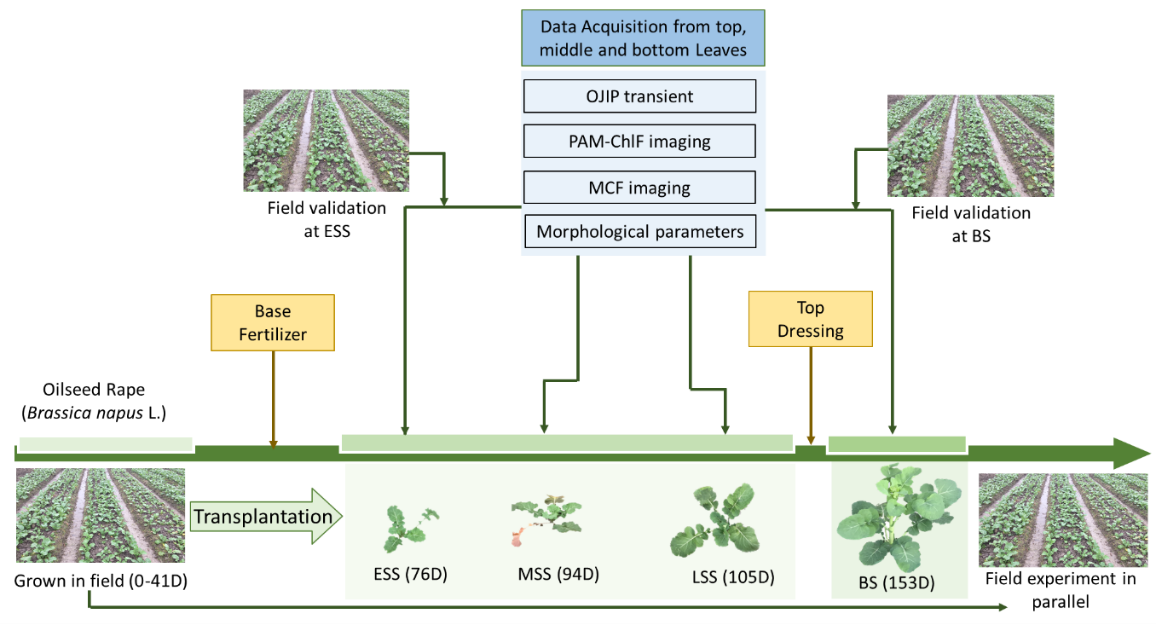On August 10th, 2020, Journal of Experimental Botany, one of the TOP Journals in the field of Bio-plant science published online a reasearh paper entitiled "Optimal temporal-spatial fluorescence techniques for phenotyping nitrogen status in oilseed rape (Brassica napus L.)", which is completed by Prof. Cen Haiyan's team, BEFS.


Nitrogen (N) fertilizer maximizes the growth of oilseed rape (Brassica napusL.) by improving photosynthetic performance. Elucidating the dynamic relationship between fluorescence and plant N status could provide a non-destructive diagnosis of N status and the breeding of N-efficient cultivars. The aim of this study was to explore the impacts of different N treatments on photosynthesis at a spatial–temporal scale and to evaluate the performance of three fluorescence techniques for the diagnosis of N status. One-way ANOVA and linear discriminant analysis were applied to analyze fluorescence data acquired by a continuous excitation chlorophyll fluorimeter (OJIP transient analysis), pulse amplitude-modulated chlorophyll fluorescence (PAM-ChlF), and multicolor fluorescence (MCF) imaging. The results showed that the maximum quantum efficiency of PSII photochemistry (Fv/Fm) and performance index for photosynthesis (PIABS) of bottom leaves were sensitive to N status at the bolting stage, whereas the red fluorescence/far-red fluorescence ratio of top leaves was sensitive at the early seedling stage. Although the classification of N treatments by the three techniques achieved comparable accuracies, MCF imaging showed the best potential for early diagnosis of N status in field phenotyping because it had the highest sensitivity in the top leaves, at the early seedling stage. The findings of this study could facilitate research on N management and the breeding of N-efficient cultivars.




